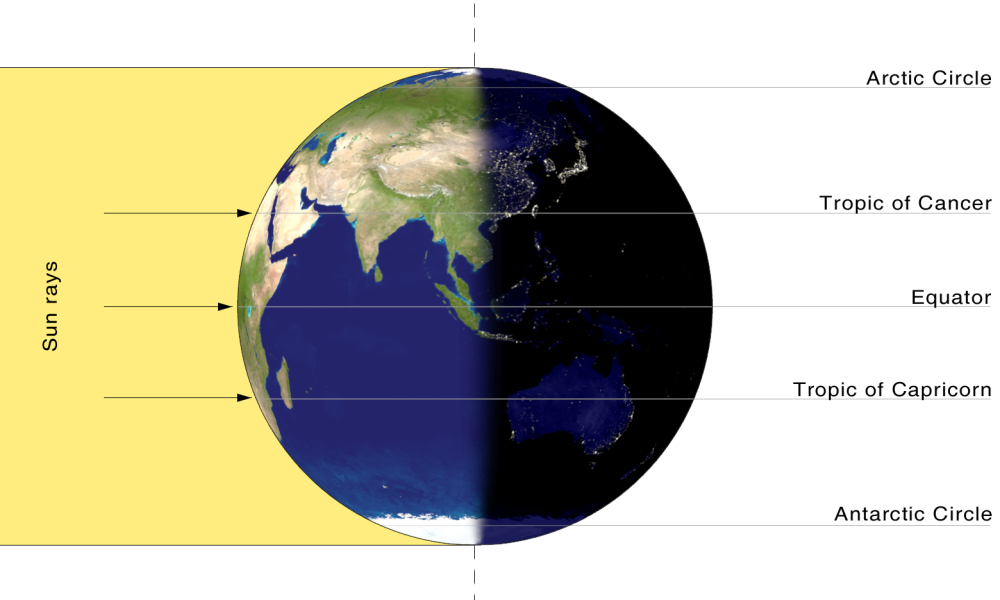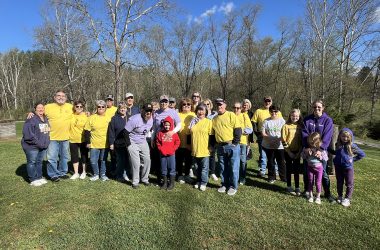Illumination of Earth by the Sun on the day of the equinox (vernal and autumnal). A view of the eastern hemisphere showing noon in Central European time zone (ignoring DST) on the day of the equinox. (Photo from Wikipedia)
Spring officially arrived on Monday, March 20, at 5:24 p.m. The time is exact because 5:24 p.m. Eastern Daylight Time was the precise moment in which the sun crossed the Earth’s equator in its northward journey.
The event is termed the vernal equinox — equinox meaning equal day and equal night. The length of daylight and night-time hours, however, are far from equal on the vernal equinox. A check of sunrise and sunset for Hurricane reveal 12 hours, 10 minutes, and 52 seconds of daylight. The closest that Putnam County came to having 12 hours of day and 12 hours of night was Friday, March 17. No place on Planet Earth experiences equal day and night on the vernal equinox. All locations have more than 12 hours of daylight because the Earth’s atmosphere acts as a lens that allows the sun to be seen after it has set.



